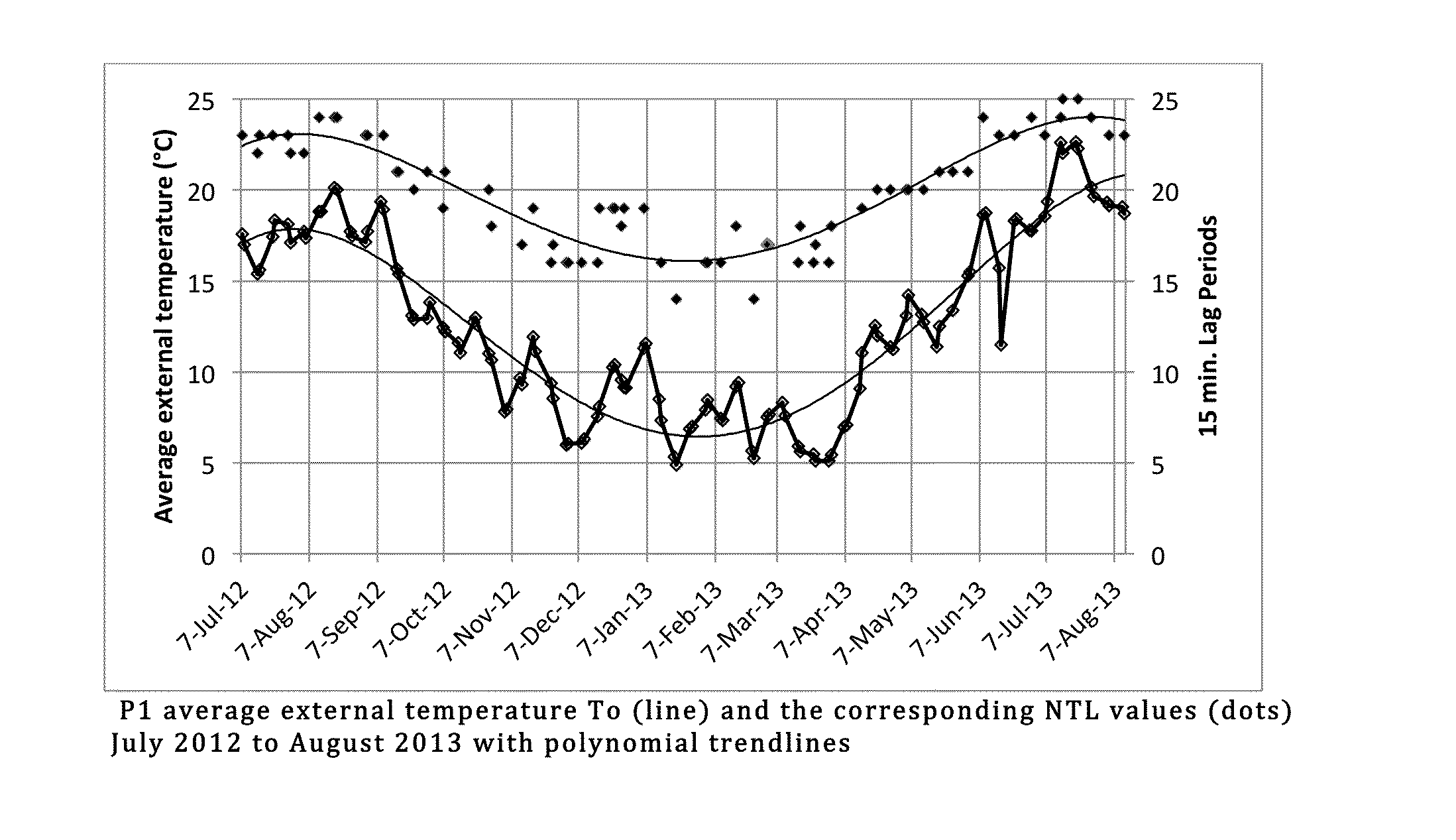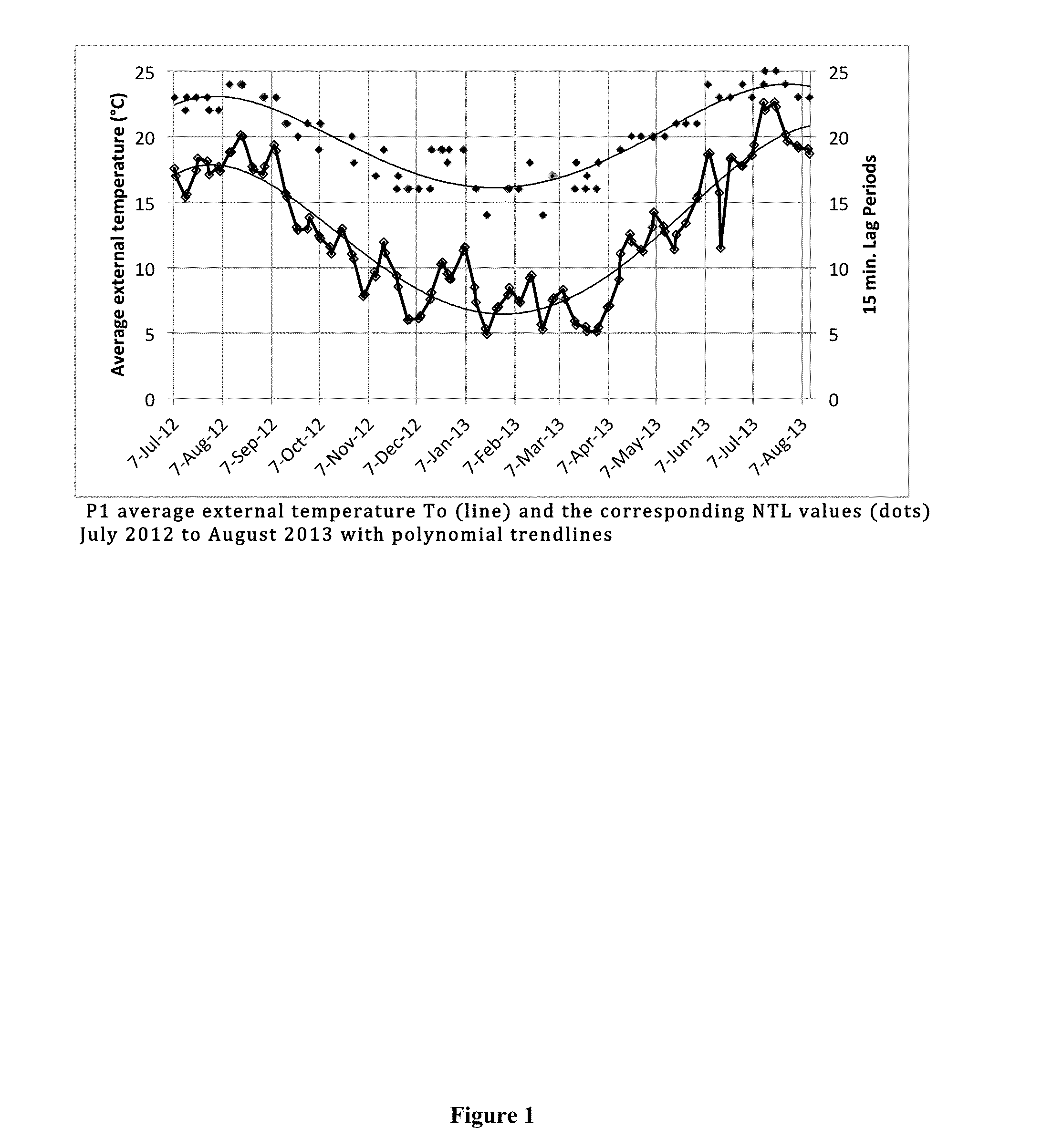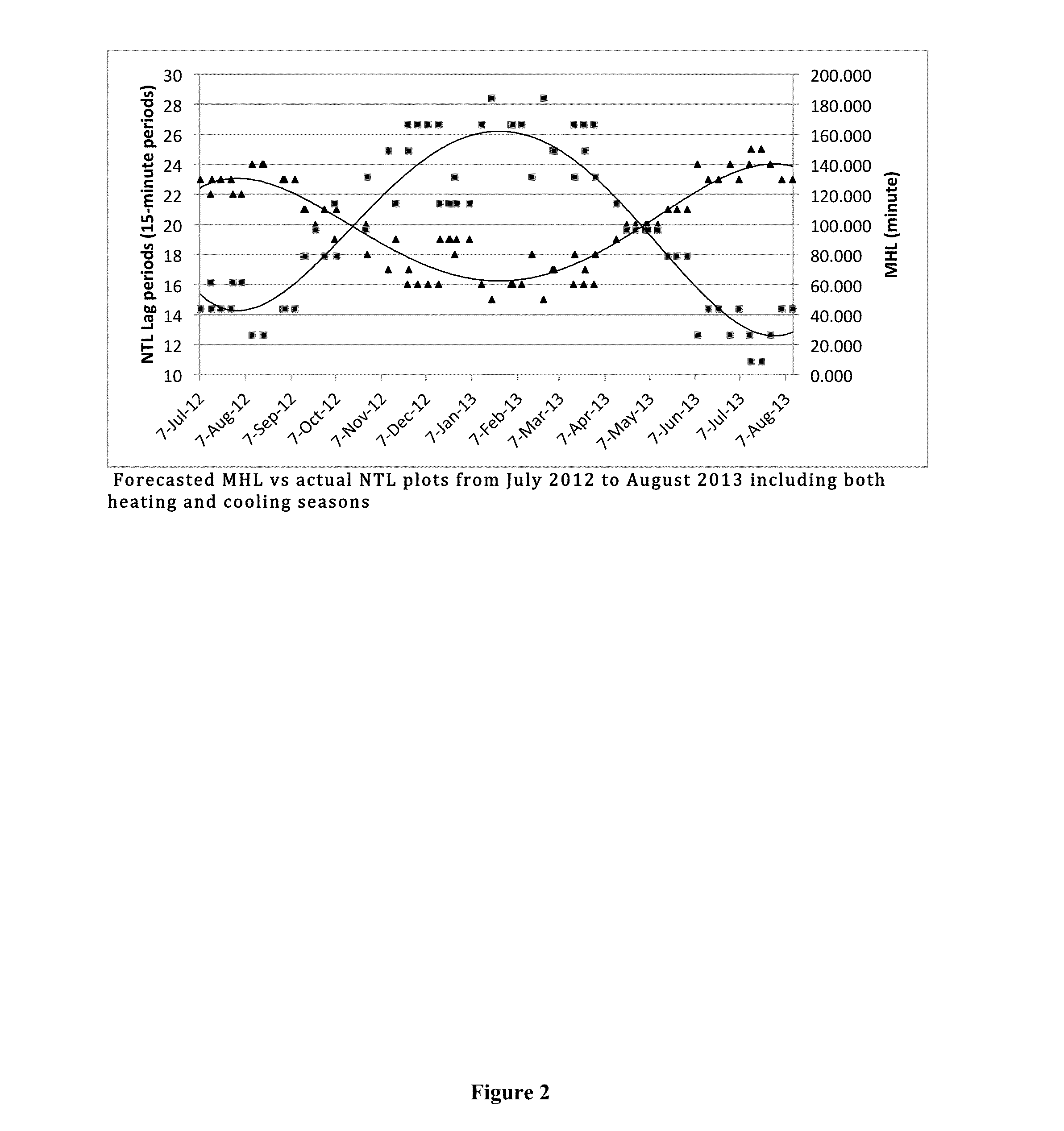Method for determining mechanical heat-up lag (MHL) of a building from the building's natural thermal lag (NTL)
a technology of mechanical heat-up lag and building thermal lag, which is applied in the field of energy management, can solve the problems of weak prediction strength of these tools, and achieve the effect of saving energy in the operation
- Summary
- Abstract
- Description
- Claims
- Application Information
AI Technical Summary
Benefits of technology
Problems solved by technology
Method used
Image
Examples
Embodiment Construction
[0016]Introduction
[0017]In SHIEL002 (U.S. application 13 / 906,822 incorporated by reference as if fully set forth herein), a method to derive a building's natural thermal lag (NTL) was presented. Ther present invention takes into account the amount of time required for the heating system installed in a commercial building as a function of external temperature. It is of interest to determine if there exists a causal link between the length of time required for the building-wide heating system to reach operating temperature (or set point) and the building's NTL. To determine if the heating system has reached set point, a typical space temperature is monitored and once this reaches a temperature deemed appropriate for occupant comfort, the heating system is deemed to have reached set point.
[0018]In SHIEL002, the NTL was determined by comparing internal space temperature and the corresponding external temperature during a period of time when the building is at rest with no mechanical hea...
PUM
 Login to View More
Login to View More Abstract
Description
Claims
Application Information
 Login to View More
Login to View More - R&D
- Intellectual Property
- Life Sciences
- Materials
- Tech Scout
- Unparalleled Data Quality
- Higher Quality Content
- 60% Fewer Hallucinations
Browse by: Latest US Patents, China's latest patents, Technical Efficacy Thesaurus, Application Domain, Technology Topic, Popular Technical Reports.
© 2025 PatSnap. All rights reserved.Legal|Privacy policy|Modern Slavery Act Transparency Statement|Sitemap|About US| Contact US: help@patsnap.com



